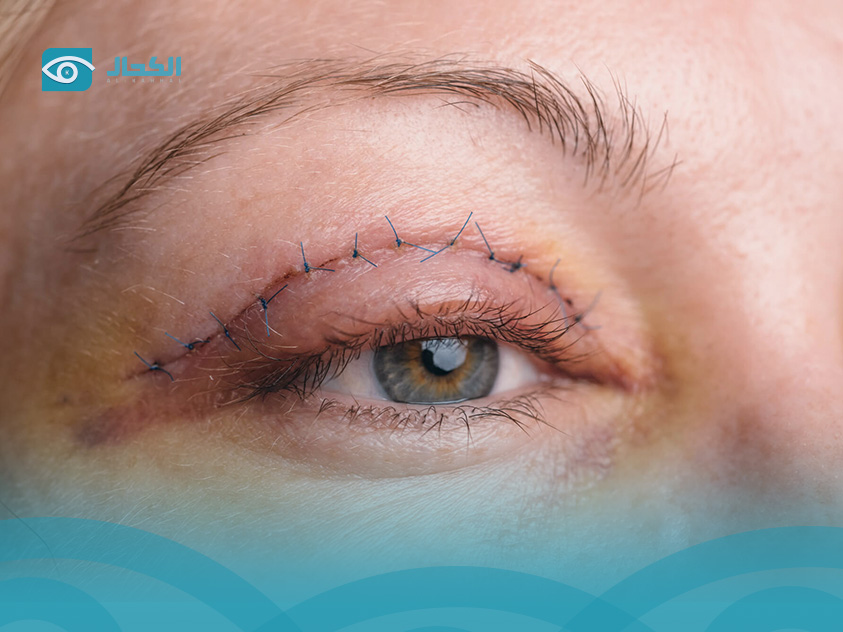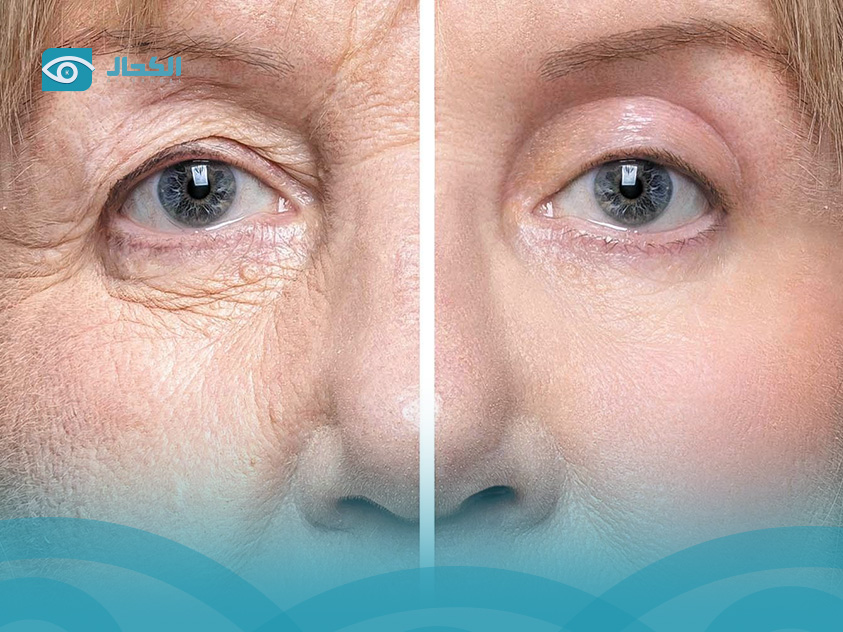
Eyelid Surgery (Blepharoplasty): What It Is, Who Needs It, and What to Expect
Eyelid Surgery (Blepharoplasty): What It Is, Who Needs It, and What to Expect

Eyelid Surgery (Blepharoplasty): What It Is, Who Needs It, and What to Expect
Eyelid surgery, also known as blepharoplasty, is a cosmetic or medical procedure that improves the appearance or function of the eyelids. It involves removing or repositioning excess skin, fat, and muscle from the upper or lower eyelids.
Many people choose eyelid surgery to reduce droopy eyelids, under-eye bags, or puffiness, which often make the face look tired or aged.
In some cases, eyelid surgery is necessary to restore clear vision when sagging upper eyelid skin interferes with eyesight. The procedure is usually done under local anesthesia, and most patients recover within one to two weeks.
Eyelid surgery is one of the most popular facial procedures because it creates a younger, more refreshed appearance. With proper care, the results of eyelid surgery can last for many years. However, it’s important to choose an experienced surgeon to ensure safe, natural-looking results.
Whether for cosmetic improvement or medical reasons, eyelid surgery can make a significant difference in both appearance and quality of life.

Eyelid surgery (blepharoplasty) is a procedure to correct or enhance the upper or lower eyelids.
It can be done for cosmetic reasons (to look younger) or medical reasons (to improve vision).
Eyelid surgery removes or adjusts excess skin, fat, and muscle around the eyes.
It helps reduce sagging eyelids, under-eye bags, and puffiness.
The surgery usually takes 1 to 2 hours and is done with local or general anesthesia.
Most people recover from eyelid surgery within 1–2 weeks.
Eyelid surgery leaves minimal scarring and provides long-lasting results.
Common side effects after eyelid surgery include mild swelling and bruising.
Eyelid surgery can boost self-confidence and make the face look more awake and youthful.
Choosing a qualified surgeon is essential to ensure a safe and successful eyelid surgery experience.
This can make your eyes look tired or sad, or even block your vision in severe cases.
Caused by fat deposits that can be reduced with lower eyelid surgery.
Non-smokers with no serious eye conditions or chronic illnesses that affect healing are ideal candidates.
If you feel your eyelids make you look older or more tired than you are, eyelid surgery can help refresh your appearance.
Eyelid surgery can enhance your look and, in some cases, improve vision—but it won’t change your facial structure or stop aging entirely.
Such as dry eye, glaucoma, or a detached retina, unless cleared by your eye doctor.
You have serious eye or skin conditions
You’re a heavy smoker and unwilling to quit before and after surgery
You have unrealistic expectations about the results
Blepharoplasty can target the upper eyelids, lower eyelids, or both, depending on your specific concerns and your surgeon’s recommendation.
During Upper Eyelid Surgery, the surgeon makes a small incision along the natural crease of the upper eyelid, ensuring that any scarring remains hidden when your eyes are open.
Upper Eyelid Surgery involves the precise removal or repositioning of excess skin, fat, and sometimes a small portion of muscle to restore a more youthful appearance.
One of the key benefits of Upper Eyelid Surgery is that it can dramatically reduce drooping lids that make the eyes look tired or aged. After the necessary adjustments, the incision made during Upper Eyelid Surgery is carefully closed with fine sutures. Many patients choose Upper Eyelid Surgery not only for aesthetic reasons but also to improve vision impacted by sagging skin. When performed by a skilled surgeon, Upper Eyelid Surgery delivers natural-looking, long-lasting results.
Lower eyelid surgery typically involves a small incision just below the lower lash line, allowing the surgeon to remove loose skin and reduce puffiness or under-eye bags.
In many cases, lower eyelid surgery also includes repositioning or removing fat deposits that create a tired or swollen appearance.
An alternative technique for lower eyelid surgery is the transconjunctival approach, where the incision is made inside the lower eyelid, this method leaves no visible scar and is ideal when only fat needs to be adjusted. Lower eyelid surgery is a popular option for those seeking a smoother, more refreshed under-eye area without drastically changing their natural look.
When considering eyelid surgery before and after, it's important to understand the transformation this procedure can bring.
Looking at eyelid surgery before and after can help you visualize how the eyes can appear more youthful, rested, and defined. Many patients find that eyelid surgery before and after images give them a clearer idea of realistic results and what to expect. The changes seen in eyelid surgery before and after vary based on whether the upper, lower, or both eyelids are treated. In this guide, we’ll break down eyelid surgery before and after for each area separately, so you can see exactly how this procedure works.
Exploring eyelid surgery before and after in detail gives you the confidence to make an informed decision.

You’ll meet with your surgeon to discuss the plan, stop certain medications, and arrange for someone to drive you home. A little preparation helps ensure a smooth and safe recovery.
Consultation with Your Surgeon
You’ll discuss your medical history, vision, expectations, and whether you need upper eyelid surgery, lower eyelid surgery, or both.
Medical Evaluation
Your doctor may request lab tests or an eye exam to ensure you’re healthy enough for surgery.
Stop Certain Medications
You’ll be asked to avoid blood-thinning medications, herbal supplements, and smoking at least 2–4 weeks before the procedure to reduce the risk of bleeding and support healing.
Plan for Recovery
Arrange for someone to drive you home after surgery and help during the first 24–48 hours. Prepare cold compresses, eye drops, and a comfortable recovery area at home.
Expect some swelling and bruising. Use cold compresses, keep your head elevated, and follow your surgeon’s instructions for a smooth recovery.
Immediate Post-Surgery Care
After blepharoplasty, your eyelids may be swollen or bruised. You’ll be given ointment or eye drops to prevent infection and promote healing.
Apply Cold Compresses
For the first 1–2 days, cold compresses help reduce swelling and discomfort.
Elevate Your Head
Sleep with your head elevated to minimize fluid buildup and speed healing.
Avoid Strain
Don’t lift heavy objects, exercise, or bend over for at least a week. Avoid wearing makeup or contact lenses until cleared by your surgeon.
Stitches Removal and Follow-ups
Stitches are usually removed within 5–7 days. Your surgeon will check the healing process during follow-up visits.
Healing Timeline
Most swelling and bruising fade within 10–14 days. Final results appear gradually over a few weeks to months, revealing a more refreshed, youthful appearance.
Eyelid surgery cost can vary from one case to another. The final eyelid surgery cost depends on several factors, including the surgeon’s experience, medical background, and the reputation of the hospital or clinic. In general, eyelid surgery cost reflects the quality of care and the results you can expect. It’s important to consult with a trusted specialist to understand your personalized eyelid surgery cost.
If droopy eyelids, under-eye puffiness, or sagging skin are affecting your appearance or vision, don’t wait, eyelid surgery can offer both functional and cosmetic benefits. Early consultation gives you the opportunity to address concerns before they worsen, helping you regain confidence and improve your quality of life.
At Al-Kahhal Medical Complex, we perform eyelid surgery using precise, advanced techniques, led by highly skilled ophthalmologists. With a focus on safety, natural results, and one of the most trusted care experiences in the Kingdom, we’re here to support your journey every step of the way.
Don’t let tired-looking eyes hold you back. Book your consultation today, and take the first step toward a more refreshed, youthful look, because your eyes deserve expert care, and your comfort begins with Al-Kahhal.
A procedure to remove or adjust excess skin, fat, and muscle from the eyelids for a younger look or better vision.
Upper eyelid surgery: Small incision in crease to remove/reposition skin or fat. Lower eyelid surgery: Incision under lash line or inside lid to reduce bags/puffiness
A procedure to remove or adjust excess skin, fat, and muscle from the eyelids for a younger look or better vision.
Costs vary by surgeon’s expertise, clinic reputation, and case complexity.
Most swelling fades in 10–14 days; final results appear in weeks to months.
Swelling and bruising are common. Use cold compresses, keep head elevated, avoid strain, and attend follow-ups